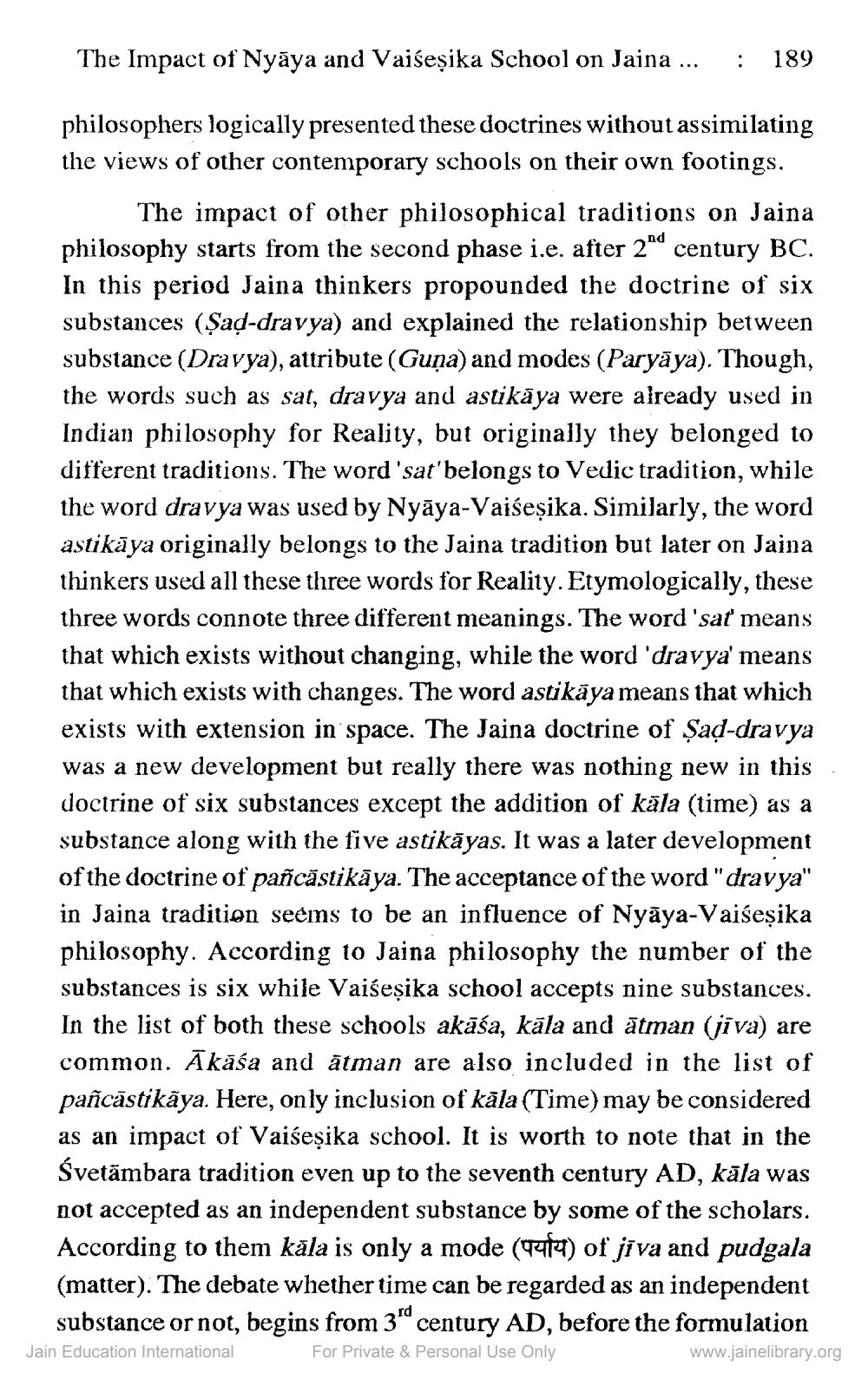________________
The Impact of Nyāya and Vaiseșika School on Jaina ...
: 189
philosophers logically presented these doctrines without assimilating the views of other contemporary schools on their own footings.
The impact of other philosophical traditions on Jaina philosophy starts from the second phase i.e. after 2" century BC. In this period Jaina thinkers propounded the doctrine of six substances (Șad-dravya) and explained the relationship between substance (Dravya), attribute (Guna) and modes (Paryāya). Though, the words such as sat, dravya and astikāya were already used in Indian philosophy for Reality, but originally they belonged to different traditions. The word 'sat' belongs to Vedic tradition, while the word dravya was used by Nyāya-Vaiseșika. Similarly, the word astikāya originally belongs to the Jaina tradition but later on Jaina thinkers used all these three words for Reality. Etymologically, these three words connote three different meanings. The word 'sat means that which exists without changing, while the word 'dravya' means that which exists with changes. The word astikāya means that which exists with extension in space. The Jaina doctrine of Șad-dravya was a new development but really there was nothing new in this doctrine of six substances except the addition of kāla (time) as a substance along with the five astikāyas. It was a later development of the doctrine of pañcâstikāya. The acceptance of the word "dravya" in Jaina tradition seems to be an influence of Nyāya-Vaiseșika philosophy. According to Jaina philosophy the number of the substances is six while Vaiseșika school accepts nine substances. In the list of both these schools akāśa, kāla and ātman (jiva) are common. Ākāśa and ātman are also included in the list of pañcāstikāya. Here, only inclusion of kāla (Time) may be considered as an impact of Vaiseșika school. It is worth to note that in the Svetämbara tradition even up to the seventh century AD, kāla was not accepted as an independent substance by some of the scholars. According to them kāla is only a mode (974) of jiva and pudgala (matter). The debate whether time can be regarded as an independent
substance or not, begins from 3rd century AD, before the formulation Jain Education International For Private & Personal Use Only
www.jainelibrary.org




